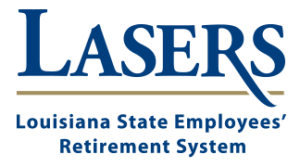Cybersecurity & You
Cybersecurity and the security and protection of your personal data are a top priority for LASERS. In addition to our own security measures in place, we encourage all of our members to practice personal data security as well.
In today’s digital age, it is essential to have a basic understanding of best practices to protect your accounts from online attackers. Check out our latest cybersecurity news, how to report fraud, and external resources below.
How LASERS Protects Your Data
Cybersecurity and the security and protection of your personal data is a top priority. Considering the increase in data breaches, it is an ideal time to reassure you about the rigorous measures LASERS has in place to protect your personal data.
View the mechanisms in place at LASERS to help safeguard your data.
Protect Yourself from Phishing Attacks
Phishing attacks are very common and, unfortunately, are one of the most dangerous forms of cybersecurity threats.
Report Fraud Immediately
LASERS takes a proactive approach to combating fraud affecting our System. Fraudulent activity is unacceptable. If you suspect any retirement-related fraud, please report it to LASERS using the options below.
Glossary of Terms
Cybersecurity
Measures taken to protect a computer or computer system (as on the Internet) against unauthorized access or attack.
Data Breach
A security incident where information such as passwords, email addresses, social security numbers, and credit card details are accessed without authorization and often used to commit crimes such as identity theft and fraud.
Encryption
The process by which organizations protect data from unauthorized use or access by scrambling it to make it unreadable.
Malware
Software that is designed to interfere with a computer’s normal functioning and that can be used to commit cybercrime.
Multi-Factor Authentication (MFA)
A method of verifying the identity of a person (as for granting access to a system) by requiring a password and one or more additional forms of authorization (such as a code, a fingerprint, or a smartphone app).
Phishing
The practice of tricking Internet users (as through the use of deceptive email messages or websites) into revealing personal or confidential information which can then be used illicitly.
Ransomware
A malware designed to deny a user or organization access to files on their computer.
Virus
A type of malicious software, or malware, that spreads between computers and causes damage to data and software.
Vishing
The fraudulent practice of making phone calls or leaving voice messages purporting to be from reputable companies in order to induce individuals to reveal personal information, such as bank details and credit card numbers.
Virtual Private Network (VPN)
A service that allows users to securely connect to the internet. It encrypts a user’s data and transmits it through remote servers so malicious third parties can’t intercept browsing data. By using a VPN, you can evade bad actors snooping on public Wi-Fi networks looking to steal your private information.
